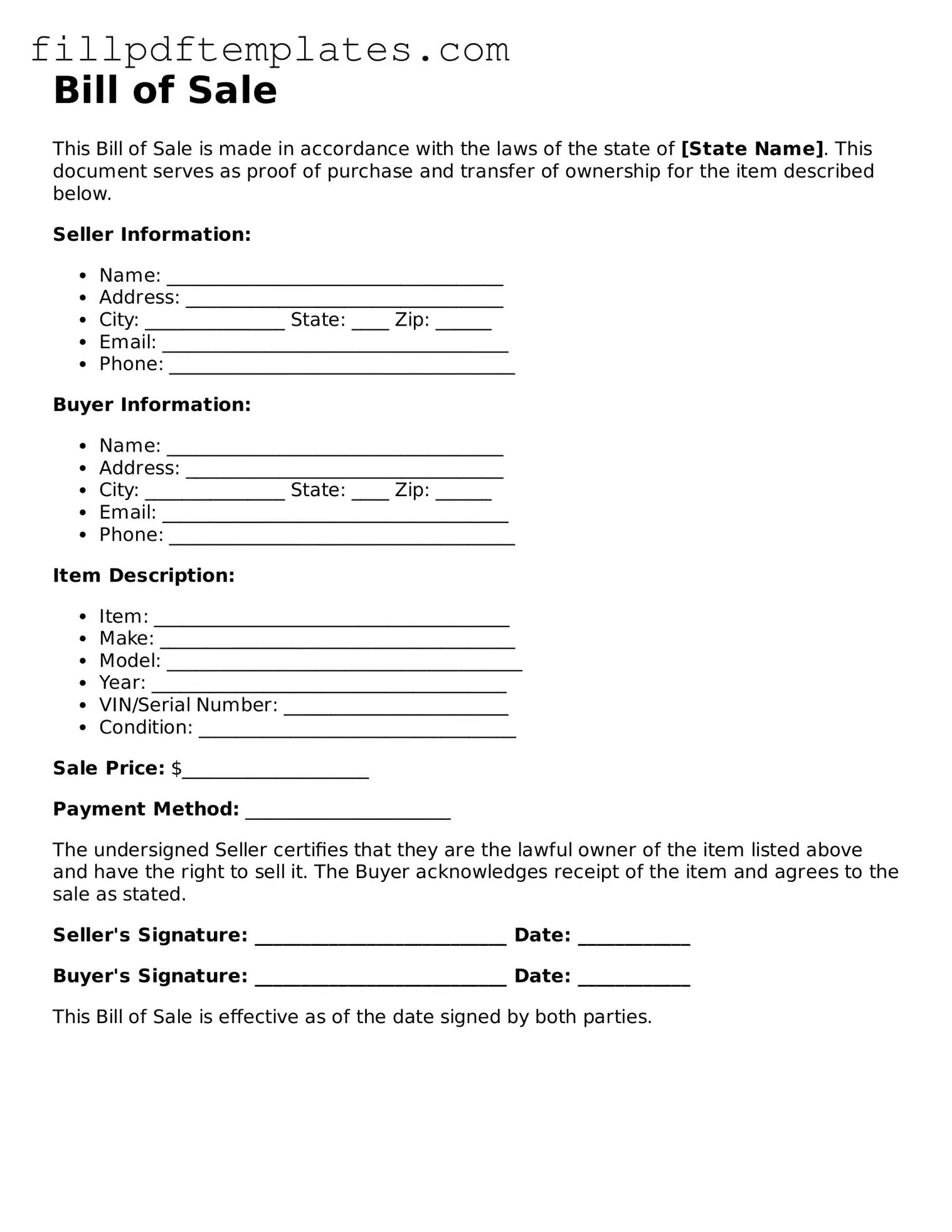Bill of Sale
This Bill of Sale is made in accordance with the laws of the state of [State Name]. This document serves as proof of purchase and transfer of ownership for the item described below.
Seller Information:
- Name: ____________________________________
- Address: __________________________________
- City: _______________ State: ____ Zip: ______
- Email: _____________________________________
- Phone: _____________________________________
Buyer Information:
- Name: ____________________________________
- Address: __________________________________
- City: _______________ State: ____ Zip: ______
- Email: _____________________________________
- Phone: _____________________________________
Item Description:
- Item: ______________________________________
- Make: ______________________________________
- Model: ______________________________________
- Year: ______________________________________
- VIN/Serial Number: ________________________
- Condition: __________________________________
Sale Price: $____________________
Payment Method: ______________________
The undersigned Seller certifies that they are the lawful owner of the item listed above and have the right to sell it. The Buyer acknowledges receipt of the item and agrees to the sale as stated.
Seller's Signature: ___________________________ Date: ____________
Buyer's Signature: ___________________________ Date: ____________
This Bill of Sale is effective as of the date signed by both parties.
